|
 Keynote
Lectures (under expansion!) Keynote
Lectures (under expansion!)
|
|
|

|
|
Yusaku
Fujii, Ph.D
Professor, Gunma University (Japan)
President, (NPO)
The e-JIKEI Network Promotion Institute (Japan)
|
[Title]
Creation of vaccine-independent and lockdown-free social system against
COVID-19
[Abstract]
In many countries around the world, the acquisition of herd immunity by
vaccination is being pursued as a measure against COVID-19. Even if herd
immunity is successfully obtained, there is no guarantee that it will be
effective for the next variants. It may not be possible to escape from the
current intermittent lockdown state. In addition to achieving herd immunity
through vaccination, every measure that has a potential to change the status
quo should be seriously considered. I propose the creation of a social
system, in which high-performance and inexpensive personal respiratory air
purification devices, which reliably protect users from droplet and airborne
infections in daily life, are developed and disseminated. People with these
devices can go out even when lockdown is deemed necessary.
[Reference]
Save the world by distributing Distancing-Free Mask!
http://www.e-jikei.org/site/Perfect_Mask.htm
|
|
|

|
|
Xie
Ming, Ph.D
Associate
Professor, Nanyang Technological University (Singapore)
President,
Robotics Society of Singapore (Singapore)
Editor-in-Chief,
International Journal of Humanoid Robotics
|
[Title]
Universal Culture Space and Value Systems
[Abstract]
We are living in the twenty-first century with tremendous progress in science
and technology, which enables us to produce abundance of supplies. However,
the international conflicts do not seem to be diminished in line with the
intensified creation of wealth. What should be the root cause behind such
phenomenon? The answer comes from the disparity of cultures among nations,
populations, and races, etc. Interestingly, there is a universal culture
space which is three-dimensional and has three axes for measuring universal
values in our common world. In this talk, I will sequentially answer these
six questions, namely: Who are we? Where are we come from? Where are we going
to? Who is the designer of human beings? Who are the producers of human
beings? Who are the users of human beings? The answers to the last three
questions will help you to understand the universal culture space and value
systems. Hopefully, the wide adoption of such findings will bring durable
peace on our Earth.
|
|
|
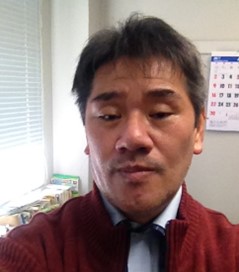
|
|
Takao
Yamaguchi, Ph.D
Professor, Gunma
University (Japan)
|
[Title]
Numerical Computation of Dynamic Responses for Hard/Soft Structures
Conflicting with Living Human Bodies with Reaction
[Abstract]
A numerical method is proposed using a fast finite element method to compute
dynamic responses for complicated systems including elastic (hard)
/viscoelastic (soft) /porous (soft) structures and living bodies with
reaction. An explicit expressions of modal loss factor are derived by
applying asymptotic expansion to complex eigenvalue problem of the dynamics
systems with dissipations Due to this method, we can know modal couplings in
damping of the dynamics systems. This method was named as MSKE (Modal Strain
and Kinetic Energy) Method. MSKE method is extended for the systems having
nonlinear restoring force with linear/nonlinear hysteresis. The proposed
method can be applied to compute impact responses of soft structures. We
extended this method as complex nonlinear restoring force element to
calculate impact responses of interaction systems between alive human bodies
and machines (e. g. robots and vehicles). Dynamic responses can be computed
for alive human bodies in consideration of difference between contraction and
relaxing condition of muscle using complex coefficients for the nonlinear
restoring force. Effects of precaution, foresight and panic on the responses
can be treated in the computation when negative values are given for the
imaginary parts of the nonlinear restoring force element.
|
|
|
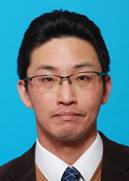
|
|
Shinichi
Maruyama, Ph.D
Professor, Gunma
University (Japan)
|
[Title]
Analysis on vibrations of thin-walled continuous body
[Abstract]
Thin-walled elements, such as beams, arches, plates and shell-panels are
widely used in recent downsized and light-weighted machines. Since flat
beams and plates have low rigidity, curved elements such as arches
and shell-panels are widely used. Rigidity of the curved elements are fairly
higher than that of the flat elements, because lateral deflection is coupled
to in-plane deflection which enhance the rigidity of the curved structures.
Furthermore, when large amplitude vibrations are generated in the flat or
curved thin elements due to resonance, the lateral deflection has nonlinear
coupling with the in-plane deformation which results in complex nonlinear
vibration responses such as, subharmonic resonance, super harmonic response,
internal resonance and chaotic vibrations. Recently, shapes of structural
elements becomes more and more complex, thus analytical procedures are
required to compute vibrations of such complex-shaped elements, precisely
considering linear or nonlinear couplings between deflection and in-plane
deformation with low computational costs. In this lecture, some recent topics
in analysis on vibrations of thin-walled structural elements: (1) nonlinear
vibration analysis on beams with variable cross section, (2) linear vibration
analysis on rectangular or annular plates dividing finite segments with
higher-order-differentiable mode function, and (3) vibration analysis on
shell-panels including clamped edges.
[Keywords]
Nonlinear Vibrations,
Vibrations of flexible structures, Vibrations Analysis
|
|
|
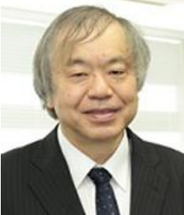
|
|
Haruo
Kobayashi, Ph.D
Professor, Gunma
University (Japan)
|
[Title]
Waveform Sampling Technologies for Next Generation Communication and IoT
Systems
[Abstract]
Waveform sampling technologies are important for 5G, 6G, IoT systems,
electronic appliances, automotive and social infrastructure.
There are
many keywords related to them:
・Sampling Circuit ・Anti-Aliasing
Filter ・Sampling
Theorem ・Subsampling
・Spectrum
Folding ・Oversampling
・Equivalent-Time
Sampling
・Metallic Ratio Sampling ・Residue
Sampling ・Coherent/Incoherent
Sampling ・Frequency
Conversion by Sampling ・Quadrature
Sampling
・Non-uniform Sampling ・Sampling
Clock Jitter, ・Phase
Noise ・Timing
skew ・Finite
Aperture Time
This talk
reviews the research results of the authors' laboratory and their future
direction.
|
|
|
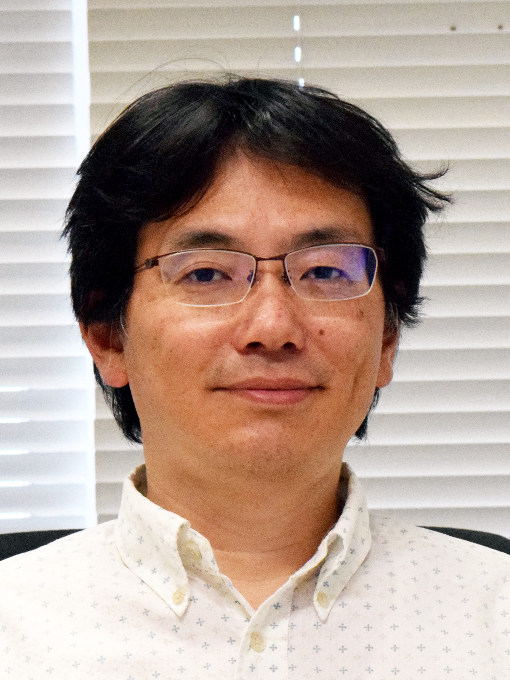
|
|
Osamu
Takaki, Ph.D
Associate
Professor, Gunma University (Japan)
|
[Title]
A criterion for determining parameters of anonymization algorithms based
on a statistical perspective
[Abstract]
In this talk, we will discuss a criterion for setting values of paramters,
called the anonymization parameters, which are used to determine degree of
anonymization algorithms, which anonymize aggregate data by adding noise to
the aggregate data while creating aggregate data from the individual data.
Differential privacy has been proposed as a measure of the security of such
anonymization algorithms. However, while conventional measures such as
differential privacy are effective for comparing anonymization algorithms,
they are not sufficient for appropriately determining the values of
anonymization parameters. Furthermore, data anonymization should be conducted
under the agreement between data providers and users, i.e., researchers.
Thus, it is important to establish easy-to-understand criteria to determine
the degree of anonymization. In this talk, we will focus on two opposing
properties P and Q, which reflect the data analysts' intentions and the data
providers' risks. After modeling two opposing properties P and Q, a criterion
called α-criterion is created to determing anonymization parameters based on
the "first kind of error" in the theory of statistical tests and
the properties P and Q. By using anonymization parameters that satisfy the
α-criterion, one can anonymize data sufficiently to guarantee the data
analysts' goals beyond a criterion while keeping the data providers risks
within the criterion. This talk will discuss the rationality of the
α-criterion from both an experimental approach and a theoretical approach
based on existing researches on differential privacy.
|
|
|
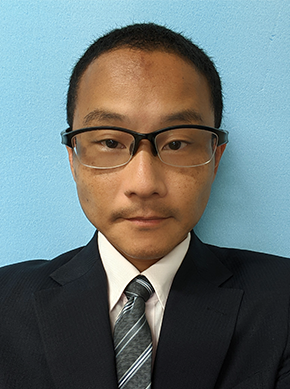
|
|
Yuki
Aoki, Ph.D
Professor, Gunma
University (Japan)
|
[Title]
Preliminary Report: Development of Data-driven Physics Education Systems
[Abstract]
Data-driven analysis is an important issue, not only in research, but also in
education for data science.
In this
study, we propose a new pedagogical method that incorporates machine learning
as a data-based analytical method in the teaching of physics.
|
|
|

|
|
Mohd
Abdur Rashid, Ph.D
Visiting
Professor, Gunma University (Japan)
|
[Title]
Evolution of InN Quantum Dot and Its Applications in Optoelectronic
Devices
[Abstract]
In this talk, the gradual improvement of material system from bulk
semiconductor to the nanoscale quantum structures will be demonstrated. The
physical properties as well as the optoelectronic features of the quantum
structures would also be discussed. There are some unique properties of InN
based quantum structure, which made it the superior from the other available
material systems. It is worth mentioning here that the Indium Nitride (InN)
has a band gap of 0.7eV, which is compatible to 1.55 μm-wavelengths. This
exciting property motivated us to investigate the performance of QD-lasers
using InN as active layer material of the laser structure. Furthermore, the
author also investigated other optoelectronic devices (LED and Solar Cell)
using the InN as the active layer material. The above investigations were
carried out through mathematical models and simulation approach. For the
above mentioned cases, the author always found better performance using InN
compared to other materials using as the active layer material. Finally, the
author would like to discuss about the future direction of new research using
InN based quantum dot in the field engineering and technology.
|
|
|

|
|
Mousa F.
Attom, Ph.D
Professor,
American University of Sharjah (UAE)
|
[Title]
Enhancement of Clay Soil strength Using Crushed Glass Waste
[Abstract]
Many materials are used to improve the properties of weak soils which is
known as soil stabilization. This study investigates the use of crushed glass
waste to improve strength of weak soil for potential use in the pavement
material. Two types of soils were selected, mainly highly plastic clay (CH)
and low plastic Clay (CL) and mixed with three different sizes of crushed
glass at four different percentages 2.5%, 5.0%, 7.5% and 10%. Both soaked and
unsoaked CBR tests were employed to evaluate the strength of the
soil. It was found that the addition of 10% of glass passing #40
will increase the unsoaked CBR value up to 388% and 433% for CH and CL soil,
respectively. However, the addition of a larger size of the crushed glass
more than 5% will decrease the CBR value. Additionally, the unsoaked samples
showed a significant increase in strength than soaked samples.
|
|
|
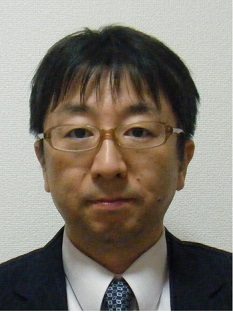
|
|
Nobuaki
Nakazawa, Ph.D
Professor, Gunma
University (Japan)
|
[Title]
Intuitive Interface Based on Eyelid Shape for Operation of Page Turner
Machine
[Abstract]
In this study, we developed an intuitive interface by using eyelid shape for
operation of page tuner machine. In cases where the iris is observed by the
camera, the horizontal gazing points can be easily estimated from the
relative distances between the iris and the left and right corners of the
eyes. On the other hand, it seems to be difficult to recognize the vertical
fixation point because the eyelid covers the eyeball. Here we utilize
the eyelid shape to detect the vertical gazing position. The proposed system
was applied to the operations of the page turner machine. In trial
operation, the system could judge the user’s states of both reading a
book and operating the machine by the special feature points on an eye.
|
|
|

|
|
Noriaki Yoshiura,
Ph.D
Professor,
Saitama University (Japan)
|
[Title]
Dark Web and Money Laundering
[Abstract]
Dark Web enables anonymous usage of web services Dark Web enables providing
websites anonymously and accessing websites anoymously. The good usage of
Dark Web is whistle-blowing, but almost all usages of Dark Web are bad. In
Dark Web we can find many transactions of illegal goods such as drugs, fake
passports or fake idtification cards, stolen credit card numbers and so on.
Money which is used in transactions is Bitcoin, a major cryptocurrency.
Website owners obtain Bitcoin by transaction of illegal goods and launders
Bitcoin to escape from police pursuit. We give a presentation of current
status of Dark Web and money laundering in cyber crime.
|
|
|
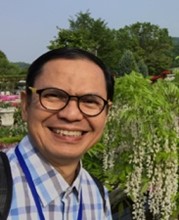
|
|
Dr.-Ing.
Mitra Djamal, IPU, ASEAN Eng.
Professor,
Institut Teknologi Bandung (Indonesia)
|
[Title]
New Method for Halal Food Authentication
[Abstract]
Halal food authentication is an important issue, especially for the Muslims community.
Until now people needs long time (several days) to determine that a food does
not contain lard, because it uses a long chemical process. We have developed
a new method for authenticating halal food based on Raman Spectroscopy. Using
this method we can determine that a meal does not contain lard quickly and
inexpensively. The Raman spectral data acquired from animal fats (lard,
tallow, and schmaltz) is analysed by Principal Components Analysis. Further
analysis was carried out using the comparison of unsaturated fats with
saturated fats or esters. The results showed that there was a distinct
separation between lard, tallow, and schmaltz.
|
|
|
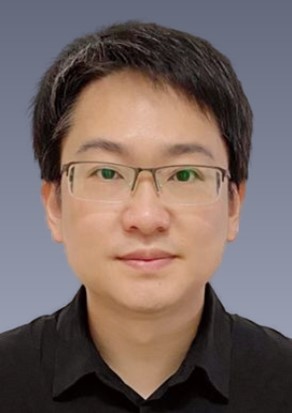
|
|
Wei
Jiang,Ph.D
Professor, Yangzhou
University (China)
|
[Title]
Hardware-in-the-loop (HIL) development system for process controls
[Abstract]
Industrial control systems usually involve complex process such as liquid
level management, temperature control or chemical reactions. To design the
digital controller for such systems, closed-loop tests have to be performed
carefully as oscillation or overshot of the system states might cause
catastrophic consequences in certain process systems. Real-time simulation
offers a low cost, safety proof and at-all-times test environment for the
control system design. In this paper, a real-time process control
hardware-in-the-loop (ProcHIL) system is proposed. The ProcHIL system
consists of a fixed-point digital signal controller (DSC) and dedicated
signal conditioning peripherals. The DSC performs accelerated iterations of
the difference equations of the dynamic process. In order to interface
industrial control systems, various low-cost interface circuits are designed,
featuring the isolated analog voltage output and 4-20 mA current output for
sensor emulation, high-speed digital I/O ports for controller interaction,
and low-speed digital I/O ports for the event control and display. A
classical two-tank model is derived and implemented in the DSC which is later
verified with the continuous model in PC simulation. The closed-loop
interaction between ProcHIL and programmable logic controller (PLC) is
carried out and compared with PC simulation. The comparison of control
effects between ProcHIL and physical plant is completed, proving the substantial
equivalence between the two.
|
|
|












